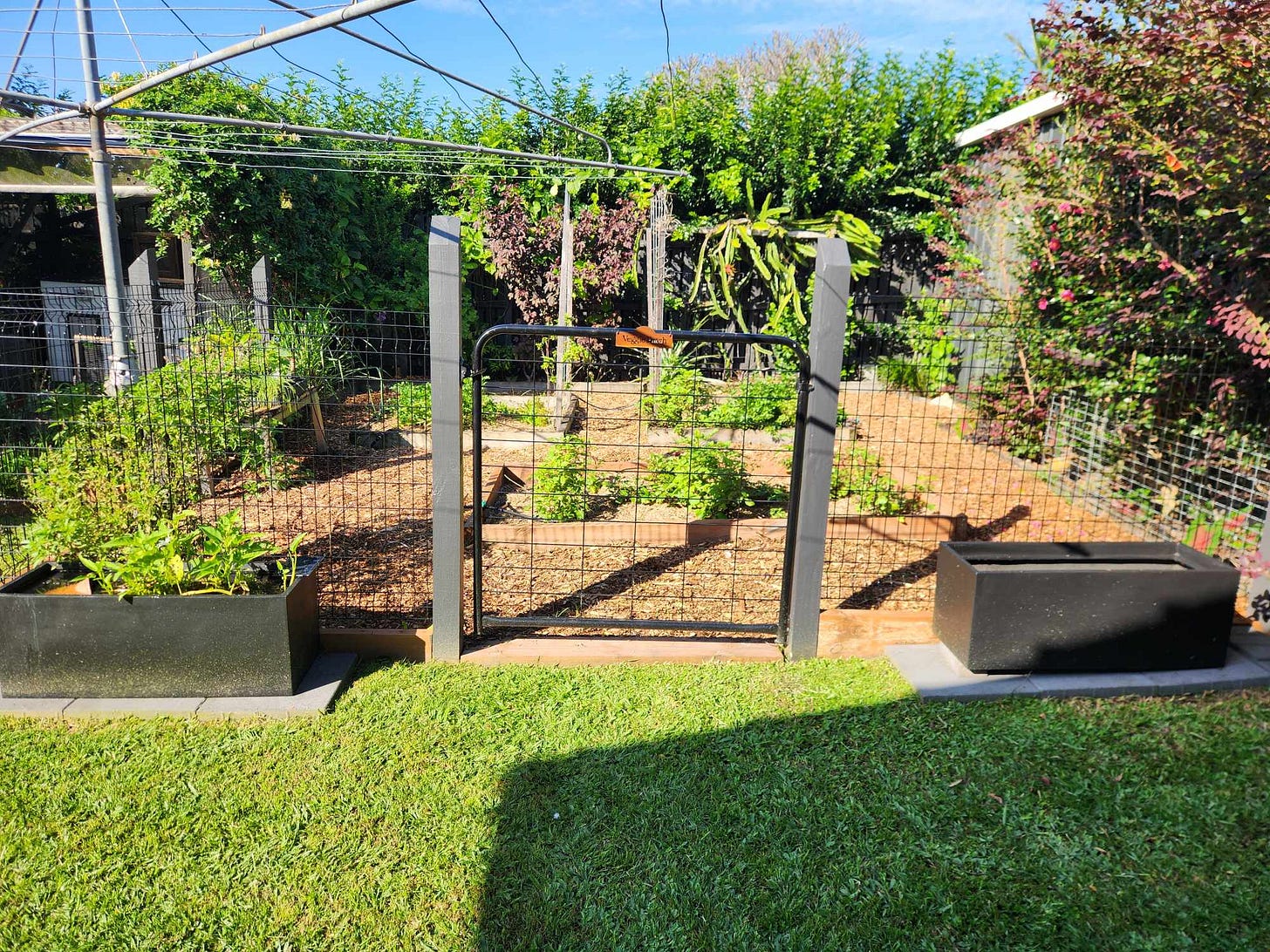Blue-tiful Blue Tongue
Hello and Happy Easter!!
I have been noticeably (I hope) absent for a few weeks. No excuses really, except busy/sick/travel/lazy etc etc. I did write today’s post in an acceptable time frame after my last email but apparently the act of proof-reading and actually sending it was too hard haha. So here it is and when you read ‘recently’ saw a blue-tongue it’s like a month ago now. Which is when I also finished my beautiful veggie patch (photo below). In fact, that’s where I saw him. I saw a slither underneath the cardboard I had laid down to smother the grass around my veggie beds and immediately thought OMG it’s a snake!! Then he (she? not up to date on my lizard-sexing) wiggled a bit further out and I saw a leg. Phew! Chased the poor thing across the patch trying to get a photo - unsuccessfully, so settled on a photo of the spot I saw him first as the cover photo for my post.
Anyway, hopefully I’ll be back on the bandwagon with writing again. The weather is amazing at the moment and I am super excited to be back in the garden.
Hope you’re having a wonderful long weekend. Talk soon xx
Kat
My finished veggie patch. KangKong growing in the black tub on the left, still need to get something in the one on the right. Also need to put some actual veggies in because currently its a lot of parsley, mexican coriander and the remnants of failed dahlias. But it looks tidy and it has no weeds. So winning!!
I saw a blue tongue lizard in the garden recently. And despite knowing that’s where all the strawberries go (hah, sounds like I’m mass producing here… by ‘all’ I mean the whole two) I am still happy to share. There’s something magical about these huge fat skinks. Possibly the fact that their tongue looks like the sucked a warhead. But also, possibly, because they’re territorial so if you’ve got one, it’s like having a pet in your yard. A pet that eats your strawberries. And also slugs and snails - so they can stay on the good list. (This is probably a good time to note that if you poison the slugs and snails, you’re poisoning the blue tongues too).
The Eastern blue tongue lizard (Tiliqua scincoides) is native to Australia and found up and down the eastern side of Australia. They can grow up to 60cm in length (about half that is their head and body) and are relatively chunky, but this is a body-positive world so we’ll just call them ‘full-figured’. Generally they are pretty docile and shy, sheltering in leaf litter or long grass and emerging to bask in the sun. They aren’t quick moving (although that depends if you’re holding a camera*…) and if threatened they will try to scare predators off with their striking blue tongue/pink mouth combo and a hiss. Young ones in particular may throw their tail. I remember little garden skinks doing this when I was young and inadvertently stepped on them. What was left behind was reminiscent of a worm so not so bad - I can’t imagine what a larger blue tongue tail might look like. Well I can. But it’s not good. (Their tails do eventually grow back).
To encourage them in your garden, make sure you keep some messy areas, with lots of leaf litter or logs, preferably in an area protected from pet doggos. Blue tongues can live for 20 years, so they’re well worth keeping around for slug and snail purposes. Even if it does charge you strawberries for the privilege.
*I promise I saw a blue tongue but no photos were taken because they move to flippin’ fast.




